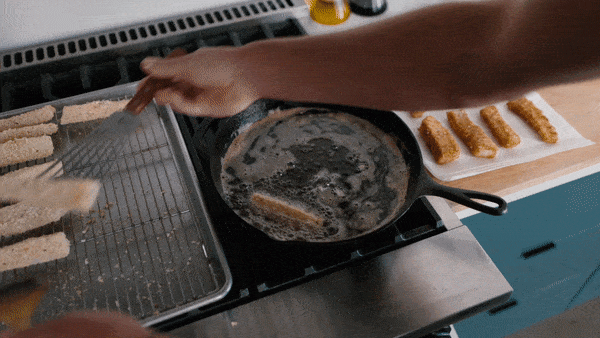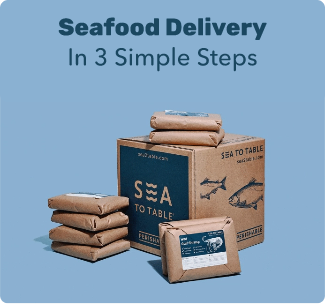
How to Fry Fish Perfectly Every Time
Who doesn’t like a piece of perfectly fried fish? Moist and tender on the inside, shatteringly crisp on the outside, and not at all greasy. But there’s no need to visit your local fish and chip restaurant when deep-fried fish is so easy to make at home. Here are some tried-and-true tips and techniques that will have you enjoying this comfort food any night of the week.
Choose the Right Frying Equipment
The best appliance for this job is a countertop deep fryer or electric frying pan, as they regulate the temperature for you. But if you don’t have either of these, a cast-iron skillet or Dutch oven on the stovetop can work just as well. The trick here is to use a candy/deep frying thermometer, which is a few dollars in the cooking section of most stores. Maintaining your oil temperature is critical. Most fish should be fried between 350-375 degrees.
Choose the Right Fish
You can’t make great fried fish unless you start with great fish, like the wild, sustainable choices from Sea to Table. But not all fish are good candidates for deep-frying. You’ll want to choose white-fleshed, lean fish like Northwest Pacific Cod, Northwest Pacific Halibut, Gulf of Maine Redfish or even Wild Gulf Shrimp. Avoid oily fish like salmon or tuna.
Batter Your Fish
Fried fish needs some sort of coating in order to cook up crisply. Pan (or shallow) frying usually calls for a dry coating of bread crumbs, cracker crumbs or panko for this trick.
Looking for a traditional English fish fry batter? Combine 1 cup flour, ½ cup milk, ½ cup water and ¼ cup baking powder and a teaspoon of salt, and whisk until smooth.
Want to know how to batter fish with beer? Simply combine one egg and one cup of flour with one twelve ounce can of your favorite lager and a teaspoon of salt.
Don't Overcrowd
When you add food to the fryer, the oil temperature will drop. Work in small batches to make this temperature swing as small as possible.
Don't Overcook
Once the seafood is cooked through, it will stop emitting steam, and oil will seep back into the food, making it greasy. Your eyes and ears can tell you when it is done. When the bubbles subside and the sizzling stops, the food is done. Most seafood will be done in 3 minutes or less.
When properly done, frying produces tender, delectable fish with a crisp crust. To determine when the fish is done, insert a fork. Properly cooked fish flakes easily and is opaque and moist. Beware of overcooking, which produces tough, dry fish.
No Paper Towels
When you remove food from the fryer, place it on a metal drying rack. When you put it on paper towels, the crust will steam from below, leading to soggy bottoms and a coating that is more likely to fall off.
Never cover your deep fried fish (that leads to soggy fish, and you’ve worked so hard on that crisp crust!) and serve immediately.
Recipes You Can Try Tonight
Our recipe for a Classic Fish Sandwich is the perfect place to flex you new frying muscles. And if you have kids, try our timeless recipe for Fish Fingers!

← Older post Newer post →

